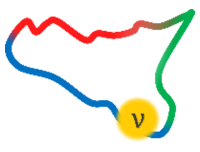Speaker
Description
The NUMEN (NUclear Matrix Elements for Neutrinoless double beta decay) project, as well as the NURE (NUclear REactions for neutrinoless double beta decay) project, have recently been proposed at the INFN-LNS laboratory to study Heavy-Ion-induced Double Charge Exchange (HI-DCE) reactions to provide data-driven information on the neutrinoless double beta (0νββ)-decay nuclear matrix elements. Since HI-DCE reactions are characterized by small cross sections (tens of nb), the use of high-intensity beams is a key feature: in this scenario, the ongoing upgrade of the LNS facility will have a crucial role. The experimental challenge the NUMEN project wants to address lies precisely in a substantial upgrade of the MAGNEX facility (installed at INFN-LNS laboratory), requiring a new focal plane detector (a low-pressure gas tracker based on a micropattern gas detector and a telescope array of SiC – CsI(Tl) for particle identification) and a scintillator array of LaBr3(Ce). These new devices must cope with extremely high fluxes of reaction products (up to MHz of ions) and should be sufficiently radiation-hard (up to fluencies of 10^13 ions/cm^2) while guaranteeing the good performance of the previous detection systems (to resolve mass ΔA/A∼1/300, angles Δθ/θ∼0.2° and energy ΔE/E ∼1/1000).
An important phase of stand-alone characterization of these devices is in progress at both INFN-LNS and different laboratories. At INFN-LNS the use of different radioactive sources emitting α particles has allowed the unveiling of important features of the detector response, partially discussed in the present contribution. According to the specifications, the results obtained are promising, but new tests are needed to better understand the behaviour of the devices at high rates and fully integrate them into the spectrometer. In this view, a new test has already been performed at the Tandem facility at the University of São Paulo (Brazil) using well collimated beams (300 μm beam spot size) of medium/heavy ions at different rate.

